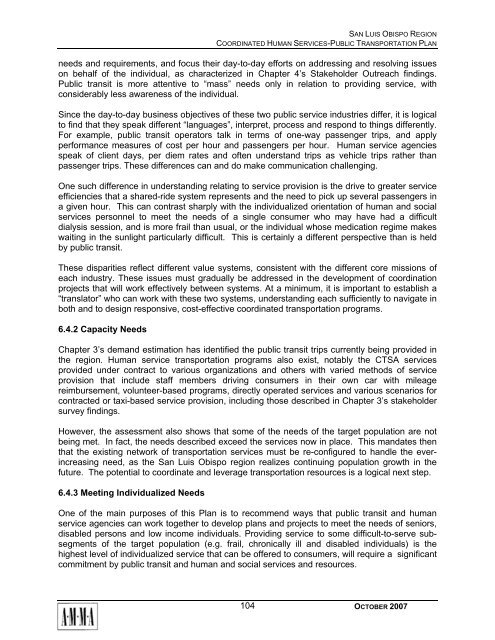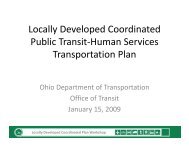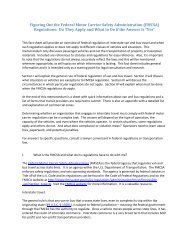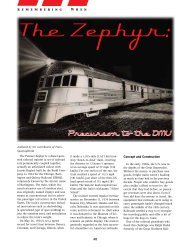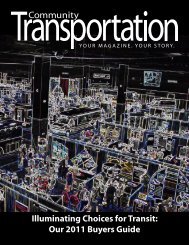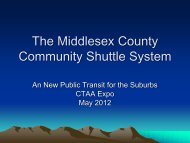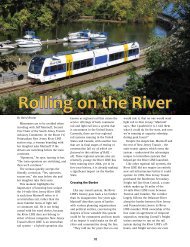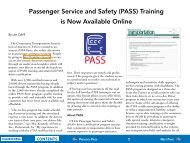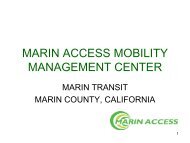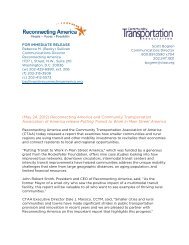San Luis Obispo - Caltrans - State of California
San Luis Obispo - Caltrans - State of California
San Luis Obispo - Caltrans - State of California
You also want an ePaper? Increase the reach of your titles
YUMPU automatically turns print PDFs into web optimized ePapers that Google loves.
SAN LUIS OBISPO REGION<br />
COORDINATED HUMAN SERVICES-PUBLIC TRANSPORTATION PLAN<br />
needs and requirements, and focus their day-to-day efforts on addressing and resolving issues<br />
on behalf <strong>of</strong> the individual, as characterized in Chapter 4’s Stakeholder Outreach findings.<br />
Public transit is more attentive to “mass” needs only in relation to providing service, with<br />
considerably less awareness <strong>of</strong> the individual.<br />
Since the day-to-day business objectives <strong>of</strong> these two public service industries differ, it is logical<br />
to find that they speak different “languages”, interpret, process and respond to things differently.<br />
For example, public transit operators talk in terms <strong>of</strong> one-way passenger trips, and apply<br />
performance measures <strong>of</strong> cost per hour and passengers per hour. Human service agencies<br />
speak <strong>of</strong> client days, per diem rates and <strong>of</strong>ten understand trips as vehicle trips rather than<br />
passenger trips. These differences can and do make communication challenging.<br />
One such difference in understanding relating to service provision is the drive to greater service<br />
efficiencies that a shared-ride system represents and the need to pick up several passengers in<br />
a given hour. This can contrast sharply with the individualized orientation <strong>of</strong> human and social<br />
services personnel to meet the needs <strong>of</strong> a single consumer who may have had a difficult<br />
dialysis session, and is more frail than usual, or the individual whose medication regime makes<br />
waiting in the sunlight particularly difficult. This is certainly a different perspective than is held<br />
by public transit.<br />
These disparities reflect different value systems, consistent with the different core missions <strong>of</strong><br />
each industry. These issues must gradually be addressed in the development <strong>of</strong> coordination<br />
projects that will work effectively between systems. At a minimum, it is important to establish a<br />
“translator” who can work with these two systems, understanding each sufficiently to navigate in<br />
both and to design responsive, cost-effective coordinated transportation programs.<br />
6.4.2 Capacity Needs<br />
Chapter 3’s demand estimation has identified the public transit trips currently being provided in<br />
the region. Human service transportation programs also exist, notably the CTSA services<br />
provided under contract to various organizations and others with varied methods <strong>of</strong> service<br />
provision that include staff members driving consumers in their own car with mileage<br />
reimbursement, volunteer-based programs, directly operated services and various scenarios for<br />
contracted or taxi-based service provision, including those described in Chapter 3’s stakeholder<br />
survey findings.<br />
However, the assessment also shows that some <strong>of</strong> the needs <strong>of</strong> the target population are not<br />
being met. In fact, the needs described exceed the services now in place. This mandates then<br />
that the existing network <strong>of</strong> transportation services must be re-configured to handle the everincreasing<br />
need, as the <strong>San</strong> <strong>Luis</strong> <strong>Obispo</strong> region realizes continuing population growth in the<br />
future. The potential to coordinate and leverage transportation resources is a logical next step.<br />
6.4.3 Meeting Individualized Needs<br />
One <strong>of</strong> the main purposes <strong>of</strong> this Plan is to recommend ways that public transit and human<br />
service agencies can work together to develop plans and projects to meet the needs <strong>of</strong> seniors,<br />
disabled persons and low income individuals. Providing service to some difficult-to-serve subsegments<br />
<strong>of</strong> the target population (e.g. frail, chronically ill and disabled individuals) is the<br />
highest level <strong>of</strong> individualized service that can be <strong>of</strong>fered to consumers, will require a significant<br />
commitment by public transit and human and social services and resources.<br />
104<br />
OCTOBER 2007


